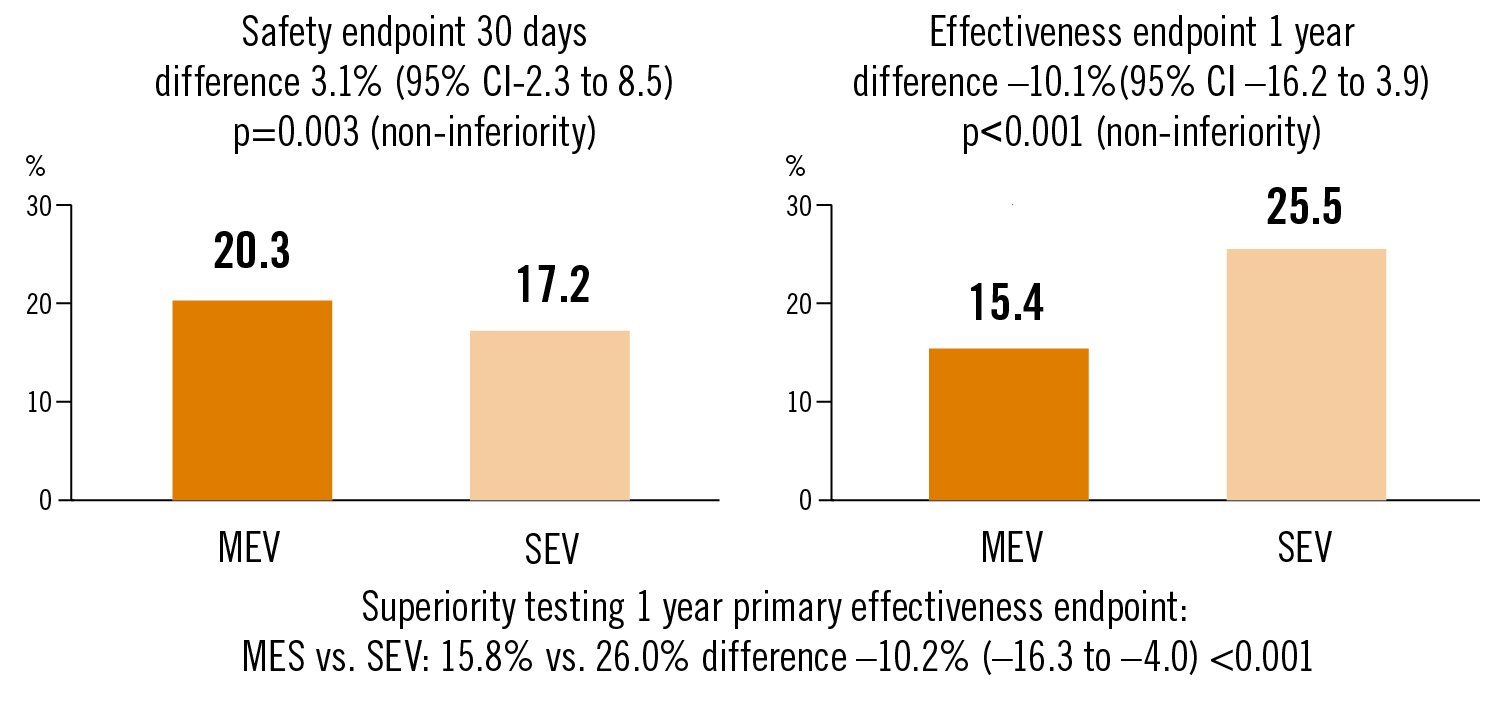Objective
to compare the clinical outcome of mechanically expanded aortic valve replacement (MEV) with self-expanding aortic valve replacement (SEV) for treatment of severe aortic stenosis
Study
multicentre, non-inferiority randomised (2:1) trial (margin 10.5%)
Population
patients with severe aortic stenosis at high risk of mortality
Endpoints
safety: composite all-cause mortality, stroke, major bleeding, severe kidney injury and major vascular complications at 30 days effectiveness: composite all-cause mortality, stroke and moderate or greater paravalvular leak at 1 year


Conclusion
treatment for severe aortic stenosis with use of mechanically expanded vs. self expanding TAVR did not result in inferior safety or efficacy outcomes
Feldman et al. JAMA. 2018;319:27-37